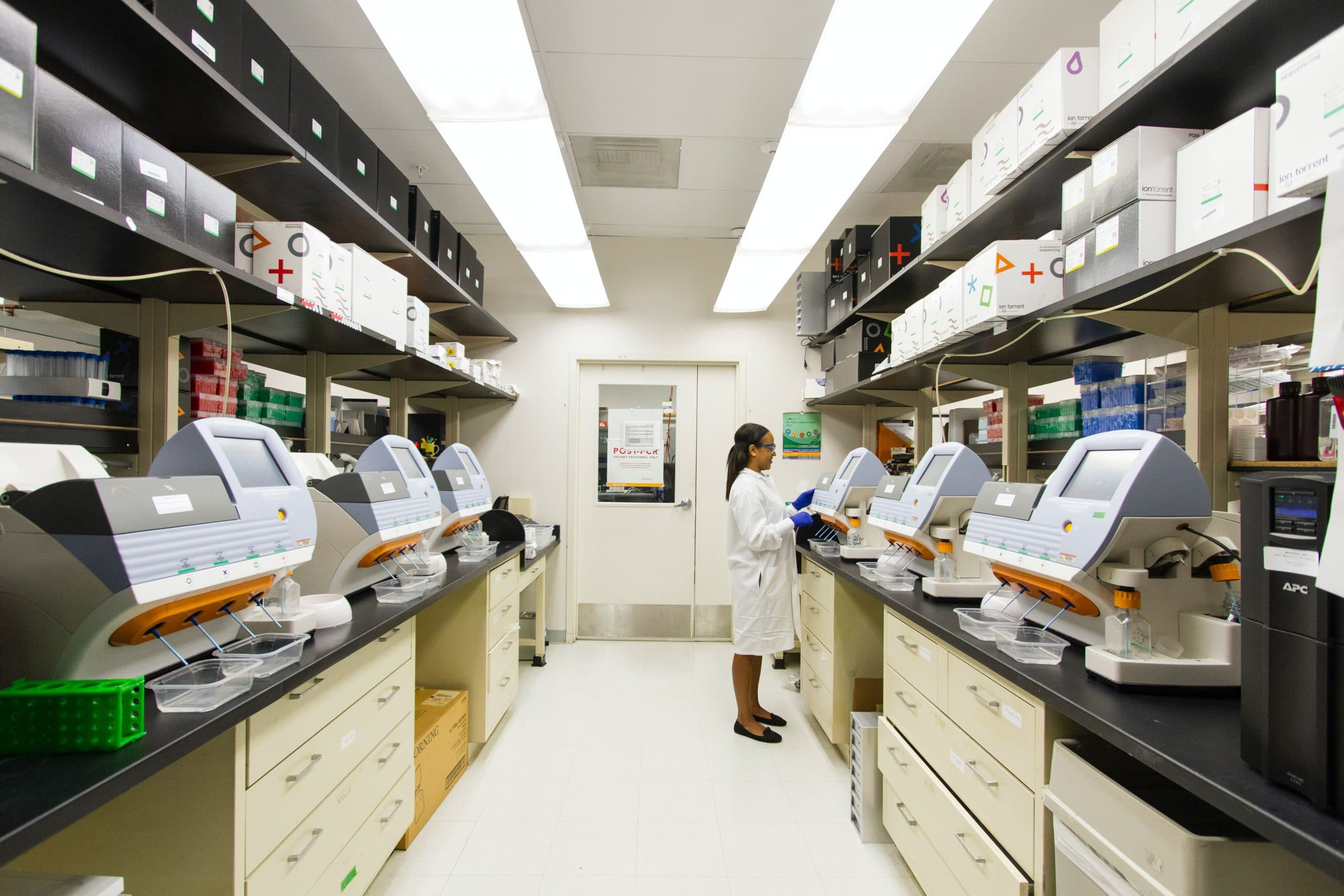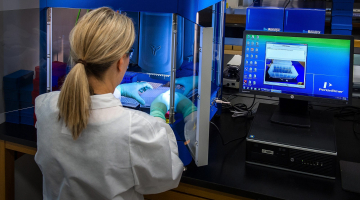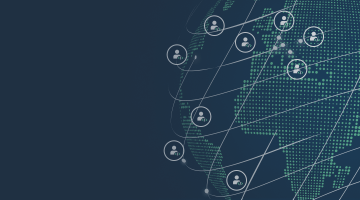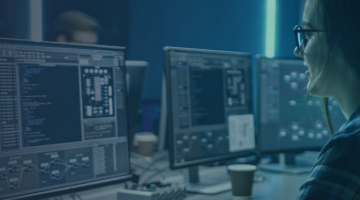

IoT in healthcare: 5 best examples
The Internet has opened up a whole new world for healthcare. Medical devices appear in the universe of total connectivity provided by the Internet of Things (IoT), which improves the quality of life of patients capable of monitoring their body signals and sharing the data with healthcare specs.
Modern medicine is a vast field to implement new technologies. The variety of IoT devices is filling numerous healthcare niches to contribute to doctors and patients. Such a trend is young but promising: the IoT-based connectivity in healthcare is still far from being complete. We will indicate five healthcare areas where IoT technologies have already found successful implications. Besides, we will demonstrate that the great potential of IoT-based software solutions for healthcare is indisputable.
Learn more about IoT:
How does IoT impact to the insurance industry: Benefits and examples
What is IoT?
The term “Internet of Things” was invented by Kevin Ashton, the head of a laboratory of smart-sensor technologies at MTI, in 1999. Ashton’s team has invented a way to connect objects to the internet via the technology of RFID tags. The so-called RFID tag is a sort of identification mark that helps identify objects with radio signals. It contains a certain piece of data that various electronic devices can read.
Therefore, the Internet of Things implies a wide variety of physical objects that can communicate by sharing data via the Internet. The IoT use cases include a broad range of electronic devices varying from smartwatches and up to smart homes and factories. It is expected that about 24 billion IoT devices will appear before 2030 to generate revenue of $1.5 trillion.
The IoT architecture consists of four levels
- End devices. Physical objects are the “things” that form the IoT. They can be small as the tip of the pin and huge as a dragline: any material object can be transformed into a connected device with corresponding elements (sensors, drives, and relevant software).
- Software. That’s what makes connected devices “smart”. The IoT software provides connectivity with clouds, data collection, integration of devices, and real-time data analysis. Data visualization capabilities along with user interfaces also belong to the IoT software.
- Communication channels. Choosing an appropriate communication solution is critical to building IoT systems. The selected technology determines the ways of receiving and sending data to/from a cloud. Connecting with third-party devices is also about this issue. Several communication protocols are applied to the IoT environments: ZigBee, Thread, Z-Wave, MQTT, LwM2M, etc.).
- Platforms. IoT devices are able to “feel” what happens around them to inform users about it. All the sensory data is collected, analyzed, and represented to users through the IoT platforms. Both on-premise and in-cloud platforms are available. The choice of every particular platform depends on numerous project-related factors such as an IoT architecture, technology stack, parameters, settings, protocols, hardware, security, cost.
Learn more about our IoT expertise.
What challenges does the IoT technology help overcome in healthcare?
When it comes to the IoT in healthcare, there is a separate healthcare-related subdivision — the Internet of Medical Things (IoMT). IoMT generates and aggregates numerous data flows from various medical devices that track physiological aspects of patients: movements, slipping dynamics, heart rate, allergic reactions, and the like.
IoMT helps create more personalized approaches to the analysis of health status as well as develop more coherent strategies of disease management. The data collected via IoMT allows doctors to achieve the following, among other things:
- Make an accurate diagnosis
- Build treatment plans
- Improve the security of patients
- Simplify caregiving
- Continuously monitor critically ill patients
Deloitte expects that the global IoMT market will grow to $152 billion by 2022. Such capitalization does not seem too huge if we consider the main categories of IoMT. They reflect the healthcare domains where the Internet of Things healthcare promises to keep evolving.
Custom software development for healthcare. Here’s what we do!
Remote medicine
The IoT technologies working in this domain allow patients to transmit their data to remote healthcare providers right from home. Remote patient monitoring covers the variety of IoT healthcare devices capable of sending various medical metrics such as oxygen saturation (one of the most important data in the days of COVID) and blood pressure to doctors and hospitals. Such a practice can significantly reduce hospital occupancy rates during the pandemic.
Telehealth is another example of IoT and healthcare use cases. For instance, online consultations with doctors contribute significantly to recently discharged patients whose health status prevents them from going to hospitals.
Yet another area where IoT medical devices facilitate remote healthcare is the so-called PERS (personal emergency response systems). The solutions can make automatic calls for help in case of sudden heart attacks. For instance, when patients appear at risk of being unable to call the ambulance on their own.
Wearables
The on-body IoT medical devices constitute a part of digital wearables such as smartwatches and fitness trackers. Their application differs a little bit from the one inherent in the above-mentioned remote medicine IoT. Medical wearables can be used wherever patients go, while the first category belongs mainly to the in-home IoT.
All on-body IoT medical devices can be of two main types: consumer wearables and clinical devices. As their names suggest, consumer wearables provide tracking the health conditions of patients and healthy people as well. At the same time, some of the consumer on-body IoT devices allow tracking a wider range of health metrics. The famous Apple Watches can send warnings in case of irregular heart rhythms, for example.
Clinical on-body solutions belong to a narrower class of IoT medical devices that track and transmit some highly specialized health metrics. For example, diabetic patients can receive warning signals about their glucose levels from such clinical wearables. In contrast to consumer on-body gadgets, the clinical ones are always connected directly to healthcare organizations and doctors.
Community healthcare
The IoT medical devices of such a type work outside homes and hospitals. They provide tracking health metrics along with emergence connectivity around a certain city district or geographical location. One of the typical applications of such IoT medical devices belongs to paramedic vehicles.
Various healthcare services can be arranged with the IoT solutions in remote medical settings such as field hospitals, for instance. The distribution of medical products via kiosks and vending machines is also an example of the community healthcare IoT.
Hospital IoT
Numerous missions can be assigned to the in-hospital IoT medical devices. Any interactions between the hospital staff and patients can be tracked and managed via various IoT solutions. The latter ones are electronic bracelets, bedside stations, intelligent emergency systems, and body-signal collecting gadgets.
Besides, there are a lot of domestic and economic issues that can be improved by the in-hospital IoT solutions. Any hospital is a complex of premises and facilities that require continuous monitoring and management. Heating, water supply, electricity, ventilation, fire warning, medical vehicles, medication warehouses, special healthcare equipment, as well as many other aspects of hospital routines can be equipped with the internet-connected sensors, drives, and actuators linked to a central hospital management system with broad IoT capabilities.
Particularly significant is the problem of disinfection in hospital premises. Special IoT devices can control the cleanliness of various locations and undertake decontamination measures, if necessary, without involving hospital staff. It helps keep a healthy microclimate in hospital premises that has beneficial effects on patients’ health. Such IoT-based disinfection solutions are especially important in the days of pandemics. By the way, they can be applied to various places beyond hospitals: cafes, restaurants, theatres, schools, airports.
As we can see, the scope of applications of IoT in medicine healthcare is too wide to be completely covered by the existing IoT solutions. It means there is always room for new IoT players, even if some particular healthcare niche seems to be occupied. Besides, the IoT technology as such keeps developing amid the new challenges arising in the healthcare sector.
The brightest IoT use cases in healthcare

Below you can find the five best IoT in healthcare examples to see how IoT providers solve various healthcare issues and how the IoT is used in healthcare in general.
Intellectual continuous glucose monitoring
Diabetes appears among the diseases for which intellectual IoT solutions are really worth developing. One in ten adults in the world is a diabetic who needs continuous control and treatment. The CGM (continuous glucose monitoring) devices allow diabetics to track the level of glucose in their blood day by day.
Intellectual CGM systems such as Eversense and FreeStyle Libre send the data about the patients’ glucose levels to their mobile gadgets (iPhones, Apple Watches, Android phones, etc) to check the current diabetes status and predict tendencies. The corresponding mobile apps (FreeStyle LibreLink and the like) provide remote reporting for caregivers such as parents of diabetic children or relatives of elderly patients.
Even more functional IoT solutions for diabetics are represented by the so-called insulin pen. This IoT medical device combines intellectual glucose monitoring and insulin injections with the right dose at the right time. Furthermore, the device interacts with a mobile app allowing patients to keep a log of injections, calculate dosage, and control meals that can impact their glucose levels. There are several brands in the domain: Gocap, InPen, Esysta, etc.
IoT-enabled asthma management
Asthma attacks require continuous treatment with special inhalers. The IoT healthcare solutions for asthmatics imply the so-called smart inhalers that, in contrast to ordinary ones, have intellectual functions. They provide monitoring of environmental factors to notify patients when they should take their medications.
Smart inhalers take continuous records about dosages, time, and location of every inhaler usage to share the data with doctors. Besides, such IoT healthcare devices interact with mobile phones via Bluetooth to transmit the data about the air quality in real time. The corresponding mobile apps send notifications either in case of a misapplication of the inhaler or when a person leaves the device at home. Thus, the IoT-enabled inhalers have opened a new era in asthma treatment to improve asthma patients’ quality of life significantly.
Smart labs
Among the brightest IoT use cases in healthcare, medical laboratories equipped with IoT devices make all in-lab processes more effective. Contemporary medicine in general and laboratory workflows, in particular, are in many ways data-driven. That’s why the IoT technologies capable of collecting and analyzing various in-lab data can transform any medical laboratory into a smart lab.
The smart-lab IoT devices include various sorts of hardware for medical analyses and procedures. The hardware equipment is connected to the special software via end devices (sensors, gauges, data transmitters, and the like) to connect the entire in-lab IoT system with the internet. Such solutions provide multi-level control and monitoring of all in-lab processes. Remote alerts about hardware failures prevent the loss of medical samples. Prediction algorithms based on data collected from the IoT sensors facilitate lab management in terms of equipment maintenance.
Medical waste treatment is another area where IoT-enabled smart labs can show the way to greater efficiency and security. Yet another advantage of smart labs is the total connectivity that provides remote specialists with real-time results of in-lab analyses and experiments. It seems that the day is not too distant when the IoT-based labs can appear absolutely human-free.
Smart implants
The implantable IoT devices with diagnostic capabilities take medical treatment to a different level. They provide significant cost savings for clinical routines. Smart implants offer numerous therapeutic advantages to many healthcare practices such as surgery, dentistry, orthopedics, etc. They can measure various physical metrics from inside the body: temperature, pressure, force, strain, and the like. Data collected from smart implants can fundamentally change strategies for postoperative treatment and rehabilitation.
Another medical field where IoT-enabled smart implants promise a revolution includes various sorts of brain dysfunction. Brain implants will be able to overcome hitherto incurable mental diseases such as schizophrenia, as neural engineers from the Neuralink company believe. Their successful experiments on pigs and apes hint at the emerging era of cyborgs when humans with brain implants will be interfacing with the internet through just the power of thought.
Medical vending machines
Medical inventory flow has many ways to distribute medication and health IoT goods among patients. Traditional distribution channels imply a lot of staff to be engaged. Even a fully trained staff working in well-arranged medical settings is not immune to errors, miscalculations, and theft.
The IoT-based medical vending machines solve numerous problems of the healthcare products distribution with no staff required. Medical vending machines have no limitations in terms of the locations where they can be installed: hospitals, pharmacies, stores, airports, any sort of public premises, and even streets. The range of medical items that can be distributed via vending machines is very wide as well: non-prescription drugs, sanitary materials, hygienic products (automated distribution of face masks is a viable business model in the days of pandemics, right?), as well as any other type of medical supply.
Hundreds of medical vending machines can become a network that can act as the selling endpoints for large medication supply chains. Being able to cover large spatial areas, this network is an extremely cost-saving IoT solution with a clear business rationale. The excluded human factor alone can bring significant competitive advantages to vending machine providers.
Remote control via the internet and cashless payment terminals can add more value to medical vending machine networks. Balancing on the edge between healthcare and consumer markets, medical vending machines seem to be one of the most promising solutions of the IoT in the healthcare sector.
Verisense: DICEUS case study
Rich expertise in IoT technologies and digital healthcare solutions makes DICEUS a serious player in the IoT in the healthcare industry. The Verisense project is a decent IoT use case that corresponds to the current topic well.
We have created the solution in collaboration with Shimmer Sensing, one of the leading wearable vendors for various markets: education, pharmacy, enterprise.
Verisense solves problems related to clinical trials. This IoT solution represents a wearable sensor platform capable of reducing the cost and duration of clinical research. As a result, Verisense provides valuable insights into the best treatment strategies for various diseases.
The real-world clinical evidence is what Verisense represents to medical staff with the help of low-cost wearables. This IoT solution collects biometric data from wrist sensors of patients to send it to a cloud for further processing. The data security is provided by the R/Python algorithms running on AWS Lambda.
Continuous patient monitoring is conducted through a cloud-based platform and a mobile app. Our engineers have reconstructed the client’s SDK logic to achieve the best possible way of data migration, integrity, and security.
What is Shimmer Verisense?
Verisense is a custom cloud-based IoT medical platform working with the data from wearable sensors through Wi-Fi, BLE5, and LTE. Web-based dashboards display the processed data and provide a simple reconfiguration of base stations and wearables.
Our IoT platform can process various sorts of biometric data such as gait parameters, joint angle calculation, Parkinson’s tremor classification, rehabilitation exercise count. Continuous remote monitoring, deep data analysis, and real-time reporting are all in the scope of Verisense. This IoT medical solution has got awards twice as the “Best Clinical Trials Wearable Sensor Technology Company” and “Best Researcher Wearable Wireless Technology Provider 2019”.
Contact our specialist to get professional consultancy about whichever IoT solution for healthcare you may need. We can create cost-effective high-tech IoT systems for any domain of the healthcare industry.





